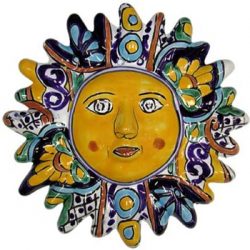“Hola, como estás,” is not the usual greeting used at the Owens Corning World Headquarters, but it was commonplace in Panther Hall recently, when OC hosted the “Understanding the Hispanic Market: Business Opportunity or Matter of Survival” conference. Business leaders from around the Toledo metropolitan area gathered to learn the magnitude of the Hispanic market and how their businesses can tap into this exploding demographic.
Mike Robinson, President of La Verdad Hispanic Marketing Solutions, gave an in-depth report of Hispanic population and economic trends, demonstrating their growing status as a vital economic factor in the U.S. According to Robinson, Hispanic buying power is expected to exceed $926 billion by 2007. As Robinson presented these demographic figures, members of Owens Corning’s Marketing Communications department learned that the Hispanic middle class has grown by 80 percent since 1980, and the number of Hispanics in the U.S. now exceeds the number of Canadians in Canada. To make the data relevant to the Toledo-area audience, Margarita De Leon, founder of Bravo, a local Hispanic newspaper, took the stage to show how Hispanic trends in the Toledo metropolitan area line up with national figures.
After establishing that the Hispanic community is the fastest, most steadily growing population in the U.S., Robinson discussed key cultural characteristics that businesses should understand when marketing to the Hispanic community. Among the most crucial to consider is the nature of the Hispanic family, whose members rely heavily upon one another for advice to reach major decisions. These tight familial bonds translate into significant marketing opportunities. Often, if a firm wins the patronage of one Hispanic person, it has won the whole family.
And, according to Robinson, “Once that trust is built, the loyalty is strong; it’s very strong.”
He explained the key to winning in the Hispanic market is to capture a “share of the heart” by connecting with core cultural values. Awareness, analysis and action were the three practical steps he cited to become a culturally literate organization. These tactics work in unison to build a strong platform from which to reach Hispanics. Awareness refers to raising internal awareness about diversity and the Hispanic consumer. The second step is to analyze the market research. The final stage involves using that research to shape an organization’s marketing strategies, campaigns and promotions.
While discussing what it takes to reach the Hispanic market, Robinson commented that OC is far ahead of many other businesses with its efforts to accurately translate relevant materials into Spanish.
Because OC’s products are useful to people of every ethnicity and cultural background, the Marketing Communications department has adopted a “no population left out” marketing strategy.
Lynne Hartzell, Director of Marketing Communications, explained, “Most of our marketing activities aren’t designed to cater to a specific audience. Instead, our goal is to include all audiences. Our products serve a diverse population of people, and our marketing efforts are representative of that.”
To reach Hispanics in this all-inclusive marketing philosophy, packaging and installation instructions are available in Spanish so products are easily accessible to Spanish speaking consumers. OC is also working with Lowe’s through 2005 and 2006 to ensure that all product literature at the point of sale is bilingual in Spanish and English.
As OC works to reach out to diverse audiences in the U.S., Hartzell commented, “2005 will be a testing and learning process for our marketing concepts to find how we can gain a greater share of the heart for such an important demographic group.”
